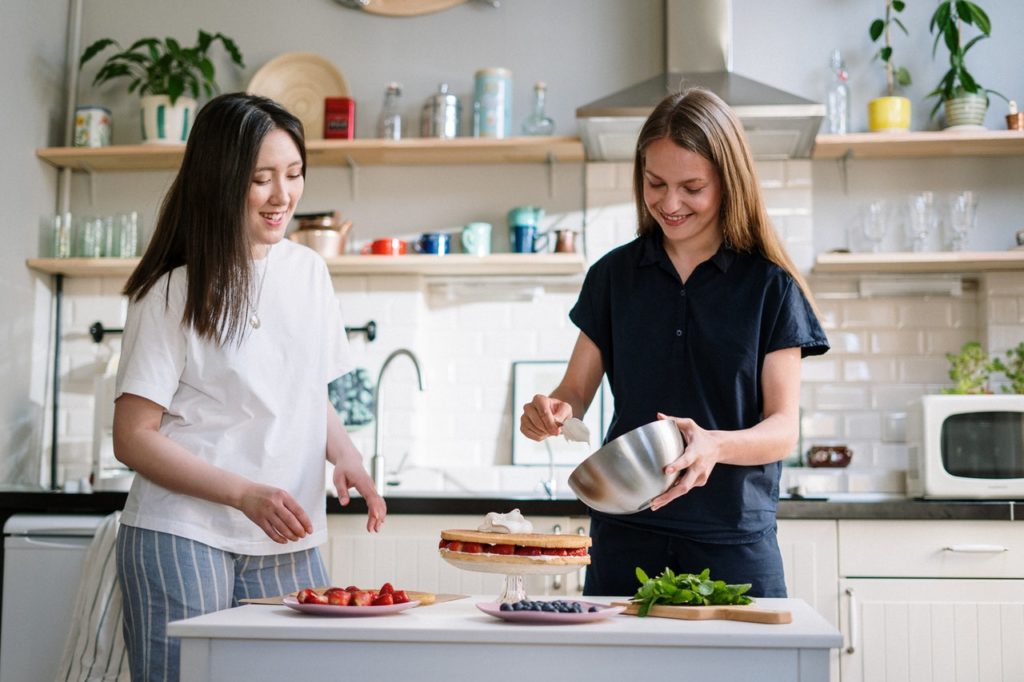You may read labels, buy organic food, and prepare fresh and delicious meals for your family — but one thing that may not cross your mind when cooking is food hygiene and safety. Each year, millions get sick from food illnesses caused by bacteria common in unhygienic food, leading to serious health issues.
To keep your family safe from food illnesses, follow the practices below to ensure your meals are delicious — and safe.
Avoid Over packing the Refrigerator
Although it may be tempting to over pack and fill your refrigerator with groceries, remember that air circulation is required to keep your foods cool. Having too much inside your fridge can disrupt this circulation and lead to your food rotting faster. To ensure your fridge is at the right temperature, you can use a thermometer to guarantee the foods inside are kept at the ideal temperature of 40˚F or below. However, when it comes to your freezer, it’s best to keep it full to ensure maximum efficiency.
Throw out Refrigerated Food Once a Week
To avoid ingesting potentially harmful food and get food poisoning, throw out refrigerated foods that you shouldn’t longer be eating at least once a week. Cooked leftovers need to be thrown away after four days, while raw poultry and ground meats at 1 to 2 days.
Handle and Store Pet Food Properly
If you have a family pet, whether a cat, dog, hamster, or snake — you also need to practice proper food hygiene and safety to ensure your family’s and pet’s safety. So, make sure to wash your hands before and after handling their food and treats. After, wash their food bowls and scooping utensils with soap and water,
Meanwhile, if you’re going out on a trip and bringing your dog with you or leaving them at dog boarding and training centers, store their food properly. For canned or pouched wet food, it’s best to leave them inside your fridge. Meanwhile, for dry pet food, keep them in a cool and dry place.
Wash Hands Properly Before and After Handling Food
Always wash hands before and after handling food to prevent the spread of germs. Make sure to wash your hands properly with soap and water for at least 20 seconds to ensure optimal cleanliness and guarantee your food’s safety.

Always Rinse Produce and Meat
Always rinse vegetables and meat under running water before cutting and cooking to prevent microbes (bacteria) from transferring from the outside inside these ingredients and eventually get into your meals.
Separate Foods Properly
When shopping for food, place raw seafood, poultry, meat in separate plastic bags and put them in your refrigerator’s freezer. Additionally, always use a clean cutting board when cutting vegetables or fruits and a separate one for raw poultry and seafood.
Cook Food to Safe Internal Temperatures
An efficient way of preventing foodborne illnesses is by checking the internal temperatures of chicken, red meat, seafood, and egg dishes. Make sure to cook all raw beef, pork, veal, and lamb to a minimum internal temperature of 145 °F. Meanwhile, keep it around 165 °F for poultry. Additionally, let meat ‘rest’ for at least 3 minutes before carving and eating them for safety and quality.
Store Foods Properly and at Safe Temperatures
Incorrectly storing food can lead to several complications, including food poisoning, especially when it comes to cold foods. Make sure to place them in their ideal temperature ranges. For instance, for cold foods, store them at 40 °F or below, and hot at 140 °F or above. Foods that get left in the ‘danger zone’ (between 40 °F to 140 °F) for over 2 hours are no longer safe to eat, so make sure to dispose of them immediately.
A crucial part of healthy eating is keeping the food you eat safely. Homeowners that often cook at home can reduce contaminants by keeping their foods safe to consume following the safe food handling practices mentioned — ensuring safe, healthy, and delicious foods for everyone in the family.

